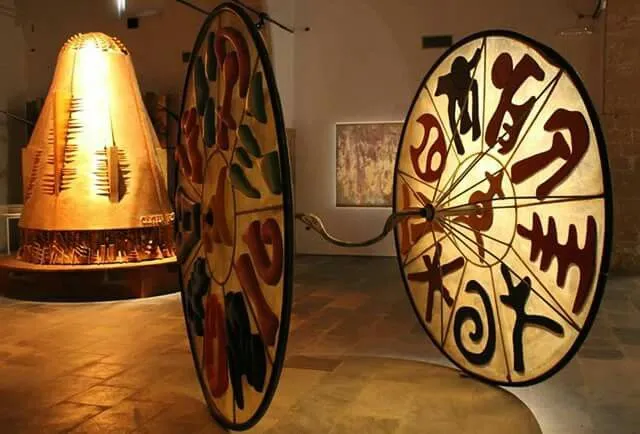Orestiadi Festival – Gibellina (Trapani)
In Sicily, the bridge between Europe and Africa, the traces of its ancient past remain vivid and tangible — a heritage shared by all the Mediterranean peoples who came from Greece, Africa, and the Middle East.
In Gibellina, in the province of Trapani, the Orestiadi Foundation explores these cultural connections through its Museum of Mediterranean Weaves (Museo delle Trame Mediterranee), where ceramics, textiles, jewelry, and costumes reveal the deep artistic and symbolic links among the civilizations of the sea.
Since 1981…
The Orestiadi Festival has been held every summer in Gibellina since 1981.
It was founded by Ludovico Corrao, former mayor and senator, and its performances take place at the Baglio Di Stefano and the iconic Cretto di Burri — the monumental land artwork created over the ruins of old Gibellina after the 1968 earthquake.
Since 1992, the festival has been supported by the Orestiadi Foundation – Institute of Higher Culture, based in Gibellina, which includes as members the Sicilian Region, the Province of Trapani, and the Municipality of Gibellina.
The Orestiadi is an international festival that features theatre, music, visual arts, and performances, often with original productions created in collaboration with artists from around the world.
Baglio Di Stefano
Today the headquarters of the Orestiadi Foundation and home to the Museum of Mediterranean Weaves, the Baglio Di Stefano is a fortified farmhouse built by Baron Di Stefano at the end of the 18th century.
Later, the buildings facing its large courtyard — known as the baglio — were transformed into a management center for the surrounding estates.
The structure features an ancient irrigation system with terracotta pipes and a water reservoir.
The adjoining garden, decorated with a fountain, stone benches, and plants chosen for both aesthetic and symbolic meaning, reflects an esoteric inspiration that guides its design.
Enclosed by low walls and lined with palm trees, this “garden of delights” once stood out against the sunlit Sicilian countryside, symbolizing the presence of home, water, and human life.
Destroyed by the 1968 earthquake, the Baglio was later rebuilt under the guidance of architects Marcella Aprile, Roberto Collovà, and Teresa La Rocca, becoming an architectural landmark of great artistic and cultural significance.




